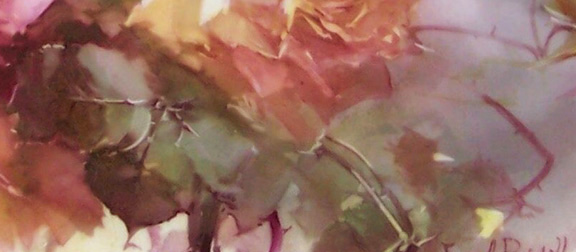
| LEAVES by Shelley Fairres and Ann Cline This is a combination lesson on leaves consisting of a terrific email lesson sent by Shelley Fairres to PPIO and some wonderful painted examples of leaves sent by Ann Cline from various artists including Aulich and Bischoff. |
 |
Just thought since I haven't written anything artsy for awhile I would say a little something about painting leaves for the newcomers to our little group. Not saying I am an expert by no means but thought some basic tips might be kinda fun. If you have painted for a long time, just read for fun and feel free to critize me at any given point. That's the fun of it all. Anyway, there are as many ways to paint leaves as there are types of leaves so just about anything goes, as long as your attempt looks like a leaf or just satisfies you. Starting out, look at your subject, remember, not all flowers and fruit have rose leaves! :0)..... |

|
Go out to your garden and pick some live specimens along with a flower or two. Notice how the leaves look behind the flower or fruit you have just picked, (or borrowed anonomously from your neighbor) and the structure of the flower. You know, if they branch off from each other straight across or stagger. Sketch the leaves loosely on your china, (please note a nice tracing is a-okay with me) with a china pencil, ultra-fine Sharpie or paint on a liner brush. Here are some colors that you can use that maybe you haven't tried yet:
2nd fire: If you want to have fun, the second fire is for you. If you accomplished your goal on the first fire and have soft leaves with plenty of highlights, the rest is gravy!
3rd fire: Give another wash of your color of choice and now you get to get creative. With your flat shader or an angular brush will do just fine, at a 45 degree angle, paint your bottom edges, anywhere a tear might be in the leaf with some of these neat combinations: Any way, this is a start, have fun, paint a leaf or two and try new things.
As always, |
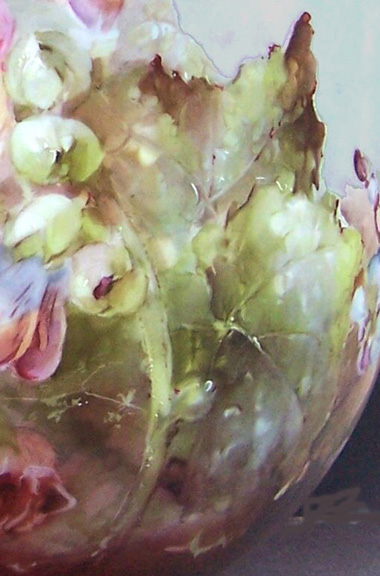 |
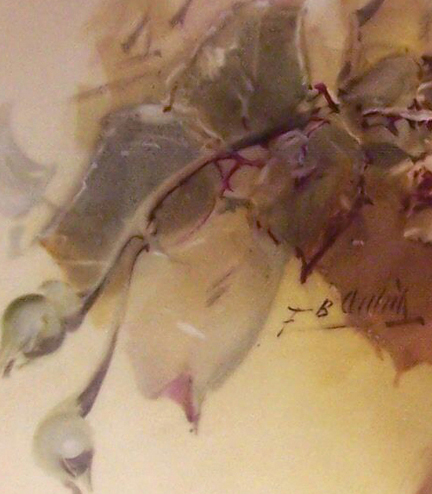 |
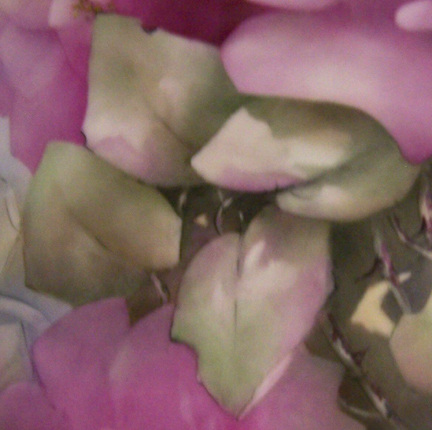 |
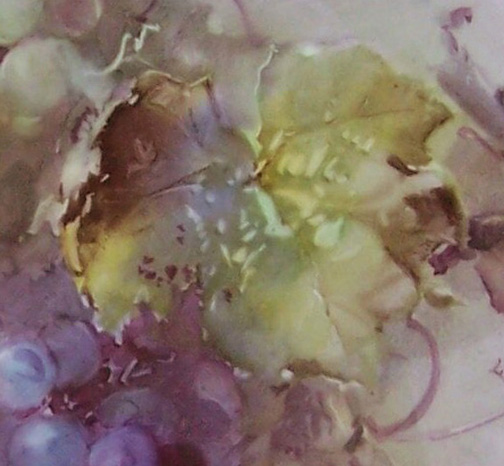 |
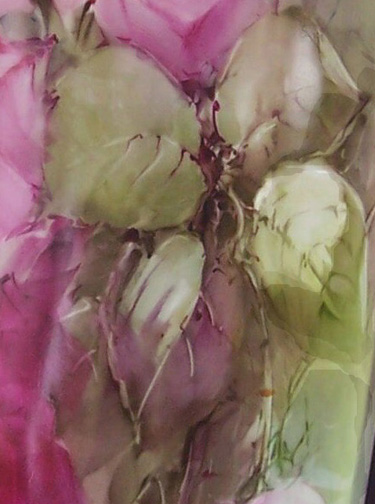 |
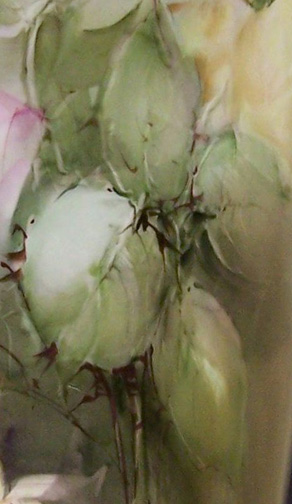 |